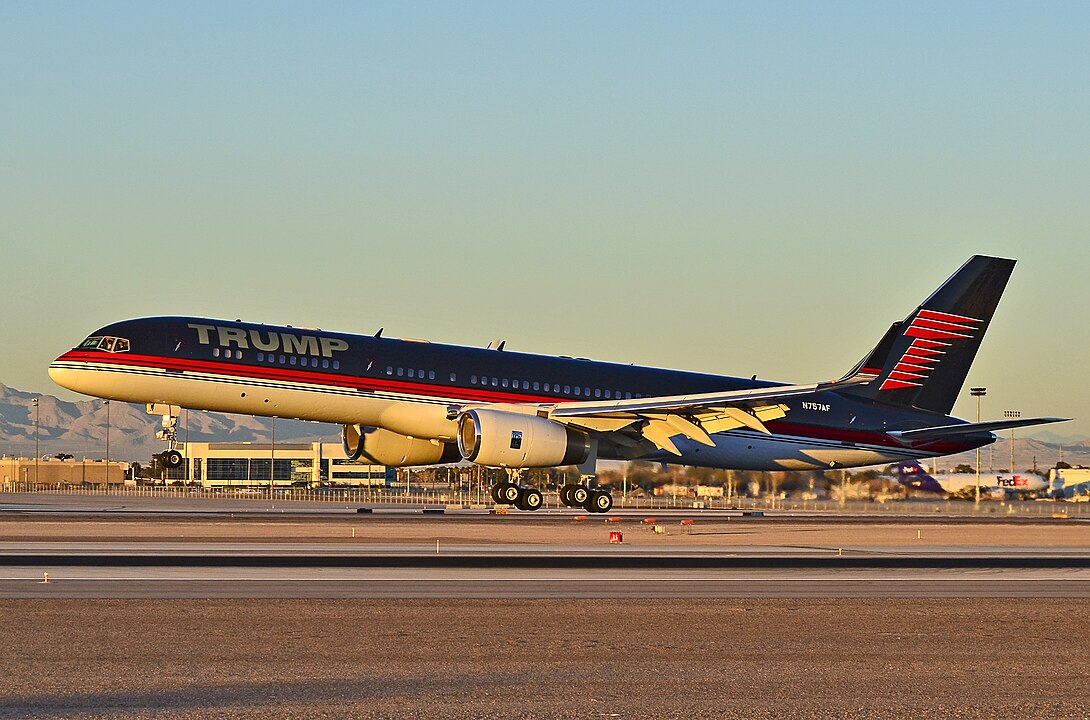Former US President Donald Trump left Pennsylvania aboard his Boeing 757 private jet after being discharged from the hospital, following an attempted assassination at a rally.
Incident Overview
The former President, who is a Republican presidential candidate, was addressing supporters in Butler, Pennsylvania, a critical swing state for the upcoming November election. During his speech, shots were fired, narrowly missing Trump and causing a slight injury to his right ear.
Join us on TELEGRAM for the Latest Aviation Updates fresh to your phone.

Trump was immediately taken off the stage and transported to a nearby hospital. Authorities quickly confirmed that he was safe and in good health. Following his discharge from the hospital, Trump departed Pennsylvania in his Boeing 757-200, registered as N757AF.
Six hours after the incident, Trump’s private jet landed at Newark International Airport (EWR) in New Jersey. Video footage shared on social media showed Trump descending from the aircraft and waving to supporters. Margo Martin, Trump’s Deputy Director of Communications, posted a video on X (formerly Twitter) with the caption, “Strong and resilient. He will never stop fighting for America.”
Shooter Identified
The shooter was identified as 20-year-old Thomas Matthew Crooks from Bethel Park. Secret Service agents neutralized the attacker, who had fired from an elevated position outside the rally venue. The FBI is still investigating the motive behind the attack.
Trump’s Boeing 757
Donald Trump’s Boeing 757, known as Trump Force One, is a key asset of Trump Aviation, a subsidiary of his business empire. The 33.2-year-old aircraft was originally delivered to Sterling Airways in 1991 and has also been part of the fleets of TAESA and Vulcan Northwest. According to Planespotters.net, the aircraft was later converted into a Boeing Business Jet (BBJ) and became Trump’s flagship.
The Boeing 757, first flown in 1982, is renowned for its versatility and durability. It combines the agility of narrow-body jets with the range of wide-body aircraft, making it a popular choice among commercial airlines, private owners, and heads of state. The Boeing 757-200 variant can fly up to 3,900 nautical miles and typically accommodates over 200 passengers in a commercial setup, or more than 70 passengers in a VIP configuration.
Youssef Yahya is the CEO and Founder of Aviation for Aviators. He also serves as the Chief-in-Editor of the platform’s website, where he shares his passion for aviation and provides valuable resources for aviation enthusiasts and professionals alike. His love for aviation and entrepreneurial spirit drive him to create innovative solutions, making Aviation for Aviators a unique resource in the aviation sector.
You might also like:
- Qatar Airways Tailstrike Incident: Airbus A350 Damaged at Islamabad
- The return of Lufthansa’s 747s
- Saudia’s Stunning Retro Livery on Newest Boeing 787 Dreamliner
- The Incredible Boeing 747-400: Which Airlines Still Operate Them Today?
- Emirates A380 Causes Flight Delays at London Gatwick Airport Due to Technical Fault
Discover more from Aviation for Aviators
Subscribe to get the latest posts sent to your email.

